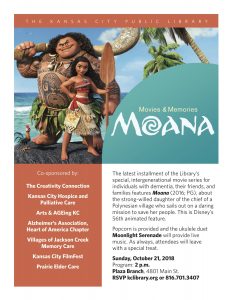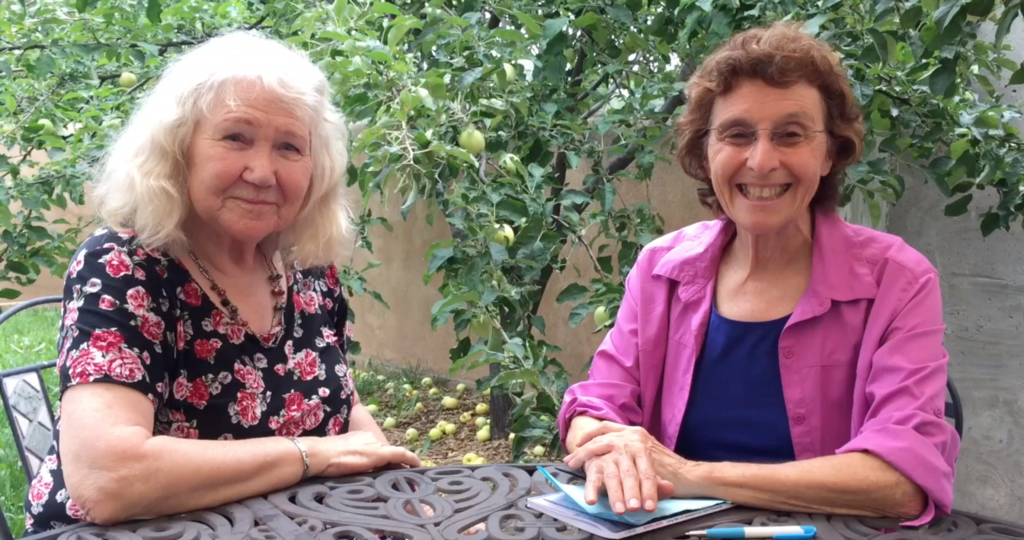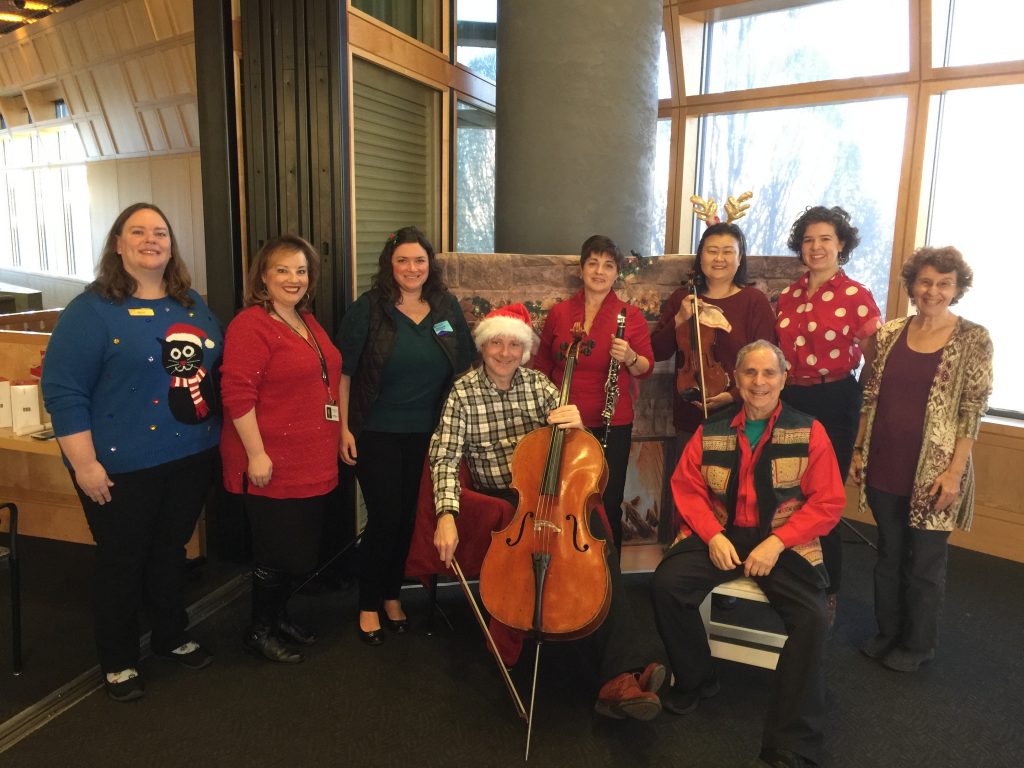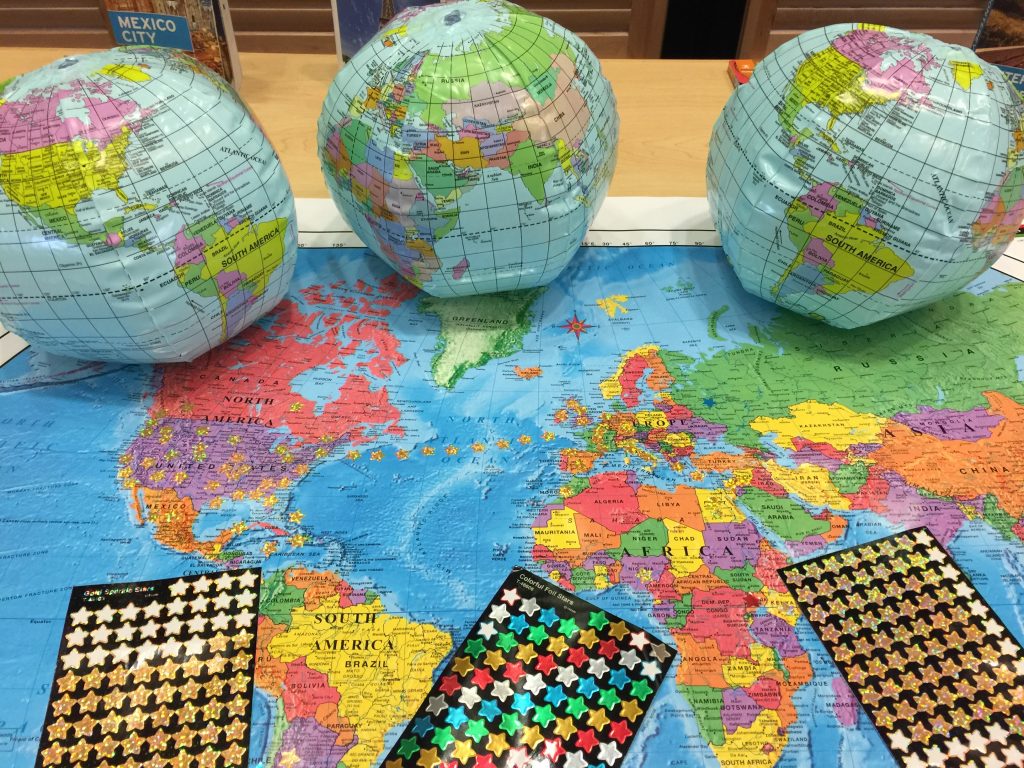Posts Tagged ‘Alzheimer’s Dementia’
Laughing for Health and Happiness in St. Thomas
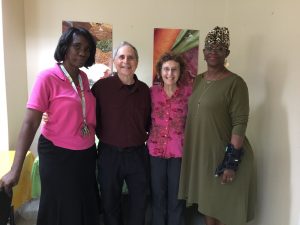 The people of St. Thomas have been through a lot and many are still recovering from Hurricane Maria. But despite the hardships, they were ready to laugh for health and happiness. We were delighted to be working with our friend Arleen Evans O’Reilly, Director of the Family Caregiver Support Program, offering a laughter yoga class in St. Thomas. We met at the senior center and had a wonderful time facilitating laughter with seniors, caregivers, and people who are living with dementia. CLICK HERE to experience a glimpse of our session.
The people of St. Thomas have been through a lot and many are still recovering from Hurricane Maria. But despite the hardships, they were ready to laugh for health and happiness. We were delighted to be working with our friend Arleen Evans O’Reilly, Director of the Family Caregiver Support Program, offering a laughter yoga class in St. Thomas. We met at the senior center and had a wonderful time facilitating laughter with seniors, caregivers, and people who are living with dementia. CLICK HERE to experience a glimpse of our session.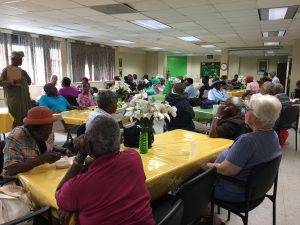
We have been experimenting with making our laughter sessions increasingly interactive. We invited our attendees to suggest ingredients for the stew and it included chicken, pumpkin, onions, carrots, potatoes, and bullion. After we added and stirred, we tasted and it was both delicious and “funny” tasting.
For our milkshake, we first asked people what ice cream they want to use. We had a lot of chocolate lovers. A few enjoyed vanilla and strawberry. We also had fans of praline cream, banana, and cherry Garcia. We held an imaginary container in one hand and we poured milk with the other hand and and said, “Ha ha ha.” After doing that three times, we scooped in our ice cream three times, adding in laughter syllables. Then, with both hands, we shook and laughed. Finally, we tasted and enjoyed a good giggle.
Ron and I continue to explore ways to add more laughter into our every day lives. The benefits of sustained intentional laughter include reducing stress, lowering blood pressure, boosting the immune system, increasing oxygen to the brain, creating a sense of connection and community, and increasing feelings of happiness. Plus, laughter offers us aerobic exercise.
Here are some of the way we’re adding extra laughter into the day:
- Laughing while we exercise. Squats are much more fun when you’re giggling as you do them.
- Adding laughter activities in while we walk.
- Singing “Ha Ha” syllables to favorite tunes. Even a simple, Row Row Row Your Boat, with Ha ha syllables, makes us laugh.
- Looking at the clock and deciding, “We’re going to laugh for one minute.”
We often visit Robert Rivest’s site for short ten-minute laughter videos, which cheer us onward. Laughteryoga.org offers more great resources. And we have fun creating our own laughter activities. If you have laughing ideas you want to share, we’d love to hear from you.
Deborah Shouse is the author of Connecting in the Land of Dementia: Creative Activities to Explore Together and Love in the Land of Dementia: Finding Hope in the Caregiver’s Journey.
Pick the Best Care Community for Your Loved One
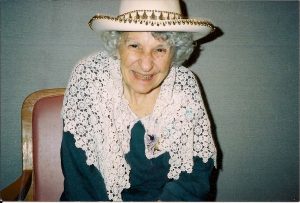
My hands were sweating as Mom, Dad, and I entered the memory care unit. We desperately wanted to pick the best care community for my mother. Pam, the head nurse, rushed towards us, arms outstretched.
“So good to see you again,” she told my father and me. She turned to Mom. “And you must be Frances. Paul has told me so much about you. I hear you’re a nurse too.”
She took Mom’s arm and they walked together down the corridor, talking. We followed and Pam stopped at a small dining area, where coffee and cookies, chocolate chip, one of Mom’s favorites, awaited us. Dad and I looked at each other and smiled. Maybe, just maybe, this was going to be all right.
We had already visited several homes and none of them seemed warm enough, caring enough, or quiet enough for Mom. What had won us over was Pam and her feeling for people who were living with memory loss, her determination to create community, her compassionate and easy way of communicating.
#
One of the most challenging experiences caregivers can face is finding the right community when your loved one needs care. Jytte Lokvig, PhD, regularly consults with families on this issue. Her new book, Moving & More, offers families concrete guidelines for finding the facility that meets their needs.
Click here to see our interview with Jytte Lokvig
When visiting a care community, Jytte suggests that we ignore the lobby and the landscaping. A beautiful lobby soothes the family’s soul but has little to do with the quality of care and engagement offered. Spend at least a couple of hours in memory care.
“Remember,” she says, “you are asking your loved one to live here. Stay on after your tour and blend into the scenery, so you can really get a sense of how staff and residents interact.”
Here’s what you want to learn:
- Does the facility practice “Person centered-care?
- Do residents participate in menu and activity choices?
- What is the staff/resident ratio?
- What are the staff retention rates?
- Do all staff receive mandatory first aid and dementia training?
- Are the family, nurse, personal care and activity staff involved in creating the resident’s care plans?
- Does the activities calendar offer a blend of entertainment and interaction?
- Are there both individual, small group, and large group activities?
- Does the staff acknowledge each resident, even with a simple greeting or compliment?
After you have a sense of the community, take your loved one to visit. Have a meal with the residents. Stay for an activity program.
“Several visits like this helps both of you feel more comfortable when the move comes,” Jytte says.
For more tips and information, visit Jytte’s site at http://www.alzheimersatoz.com and consider her book: Moving and More.
Deborah Shouse is the author of Connecting in the Land of Dementia: Creative Activities to Explore Together and Love in the Land of Dementia: Finding Hope in the Caregiver’s Journey.
Art Invites Conversation
Teri Miller, with the Alzheimer’s Association Houston & Southeast Texas Chapter, has witnessed the power of how art invites conversation. As the Early Stage Program Manager, Teri collaborates with a variety of Houston’s arts and civic organizations.
“Going to cultural activities offers people a sense of normalcy and gives them a date to put on their calendars,” Teri says. “When they go with friends or care partners, they have an experience to discuss. Even people who say, ‘Oh, I don’t care for museums,’ usually have a great time.”
Sam is an example of someone who was surprised to enjoy the art gallery.
He attended one of Teri’s early stage support groups. His wife, who cared for him at home, went to the care partner’s group. Teri formed a partnership with the Houston Museum of Fine Arts and invited her early stage group to experience a tour. When he heard the invitation, Sam rolled his eyes and said, “I’ve never been to a museum and I’m not about to start now.”
But the next week, Sam signed up for the tour.
“What made you change your mind?” Teri asked.
“My wife really wanted to go. She does so much for me, I figured I’d do something for her.”
Teri expected Sam to sit back silently, arms folded over his chest, as the docent asked, “What does this painting make you think of? Has anyone ever been in a similar setting?” But to Teri’s surprise, Sam had opinions on each of the three pieces they discussed.
Sam told Teri, “At first, I didn’t want to go because I was worried I wouldn’t have anything meaningful to contribute. But I guess you don’t have to know anything about art to enjoy the museum.”
He and his wife talked about the experience all the way home. Discussing the paintings opened up chances to reminisce and connect. Plus the experience gave them something interesting to share with their grown children and visiting neighbors.
Like many art partnerships around the country, Teri was inspired by MOMA’s Meet Me art program for people living with dementia. The Houston museum benefitted from MOMA coming to train their docents. The program offers comprehensive guidelines for visiting a museum or viewing art at home.
Creative Sparks:
Many art galleries and museums offer special tours and events for people living with dementia. If you’re lucky enough to have such a tour available, take advantage of it.
To design your own museum tour:
- Think of a museum your partner likes. If feasible, buy postcards of some of their art or visit their on-line gallery together and ask your partner which pieces he prefers. That way, you can tailor the visit to his taste.
- Choose one or two rooms that feature his preferred art. Make sure one room has a place to sit.
- Use the paintings and sculptures as a catalyst for conversation. Ask open-ended questions, discussing the colors, people, and objects you both notice.
- If the museum has a restaurant or tearoom, treat yourselves to something delicious.
- Enjoy the sense of connection that comes from discussing art; there are no right or wrong answers, just interesting observations.
- To fashion a viewing experience at home:
- Select art books from the library or use your own personal collection.
- Choose works that portray emotion, tell a story or align with your partner’s background or interests.
- Ask open-ended questions that invite conversation, such as, “What does this make you think of?” and “What do you notice in this picture?” Have fun imagining what the people in the painting are thinking. Imagine their professions and whether they’re happy.
This is an excerpt from Connecting in the Land of Dementia: Creative Activities to Explore Together. Deborah also wrote Love in the Land of Dementia: Finding Hope in the Caregiver’s Journey.
Share Your Creative Arts Endeavors: An Opportunity for People who are Living with Dementia
I am honored to be part of the Arts Work Group at the Dementia Action Alliance, which is one of my favorite non-profits. Please share this information with those who might benefit. Warmly, Deborah
Dementia Action AllianceDementia Arts Fest 2019
Mike Belleville, 2018
The Dementia Arts Fest celebrates art made by persons living with dementia!
Call for Entries Deadline March 15, 2019
If you are a person living with dementia who engages in creative projects or you’re the leader of a creativity program for people living with dementia, we want to hear from you! You are invited to submit up to 3 pieces of art, ready to display – It’s an easy process to submit. This is what we need:
1. Photos of the artwork in JPEG, PDF, or PNG format. Label each image with your last name, the title.
2. A separate page:
Your name (artist’s name) and contact information.
List of your work with titles, dimensions, and media
3. Write down a brief description about how creating art impacts you and makes you feel. (around 200 words)
5. Email the above information to Karen Love at karenlove4@verizon.net.
Please let us know if you are submitting artwork on behalf of someone else.
Sale of Artwork
▪ Artwork accepted for the exhibition may be for sale, or may be marked as ‘NFS’ (not for sale). If the artwork is NFS, artists must include a prepaid return shipment label for UPS or Federal Express with their artwork shipment.
▪ If the artist’s work is sold, the Dementia Action Alliance [a 501(c)(3) charity] will receive 50% of the retail price set by the artist as a contribution.About the Dementia Action AllianceThe Dementia Action Alliance is a national non-profit organization of people living with dementia, care partners, dementia specialists and others making our nation a better place in which to live with dementia. www.daanow.org
Deborah Shouse is the author of Connecting in the Land of Dementia: Creative Activities to Explore Together and Love in the Land of Dementia: Finding Hope in the Caregiver’s Journey.
KC Memory Cafe: The Goat and Pony Show
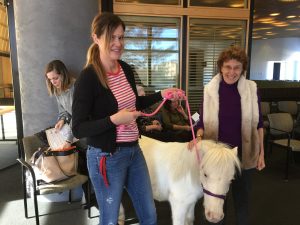 One of the stars of November’s KC Memory Cafe was a miniature horse. It’s not every day that a white horse and a couple of black goats visit the Plaza Library, accompanied by exotic bunnies and silky chickens. But these friendly animals, brought to us by the Paramount Petting Zoo, captivated all our attendees.
One of the stars of November’s KC Memory Cafe was a miniature horse. It’s not every day that a white horse and a couple of black goats visit the Plaza Library, accompanied by exotic bunnies and silky chickens. But these friendly animals, brought to us by the Paramount Petting Zoo, captivated all our attendees.
“These animals love to be held and petted,” their keepers told us. They instantly snuggled into people’s arms and were in no hurry to leave. Our attendees were filled with a magical sense of connection and relaxation, mixed in with the thrill of meeting all these new animals.
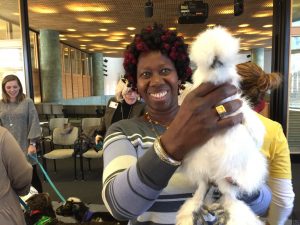 “Animals fill us with excitement, and give us something to talk about,” says Mandy Shoemaker, co-founder of Prairie Elder Care. Mandy’s organization is part of the esteemed Eden Alternative, a national movement dedicated to reducing loneliness, helplessness, and boredom through loving companionship and meaningful engagement.
“Animals fill us with excitement, and give us something to talk about,” says Mandy Shoemaker, co-founder of Prairie Elder Care. Mandy’s organization is part of the esteemed Eden Alternative, a national movement dedicated to reducing loneliness, helplessness, and boredom through loving companionship and meaningful engagement.
“Animals give us a connection,” she says.
We could see and feel that connection as we all enjoyed feeding the goats, petting the horse, and cuddling with the bunnies and the chickens. We also shared farm memories and Mandy asked, “How many of you ever thought you’d be holding a chicken in your lap?”
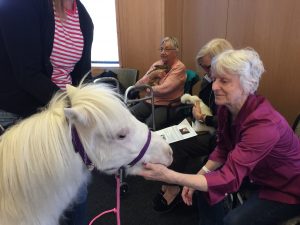 For most, it was a unique experience, one they did not tire of. For some,
For most, it was a unique experience, one they did not tire of. For some,  parting with their loving chicken or bunny was like saying good-bye to a dear friend.
parting with their loving chicken or bunny was like saying good-bye to a dear friend.
To meet the animals, click here.
Deborah Shouse is the author of Connecting in the Land of Dementia: Creative Activities to Explore Together and Love in the Land of Dementia: Finding Hope in the Caregiver’s Journey.
Santa and the Symphony Visit the KC Memory Cafe
 At our December Memory Cafe, Santa had an amazing pre-show- warm-up band: a trio from the Kansas City Symphony. Their renditions of familiar holiday tunes were musical works of art, filled with melodic flourishes and surprises. Our guests listened avidly. When Stephanie Brimhall, the Symphony’s Education Manager, led us in a singalong, everyone raised their voices and sang with heart and gusto. As our attendees finished decorating Christmas cookies with colorful icings, bright sprinkles, and little chunks of peppermint, we heard a jingling of bells and a booming, “Ho Ho Ho.” Santa had arrived, with a sack of treats.
At our December Memory Cafe, Santa had an amazing pre-show- warm-up band: a trio from the Kansas City Symphony. Their renditions of familiar holiday tunes were musical works of art, filled with melodic flourishes and surprises. Our guests listened avidly. When Stephanie Brimhall, the Symphony’s Education Manager, led us in a singalong, everyone raised their voices and sang with heart and gusto. As our attendees finished decorating Christmas cookies with colorful icings, bright sprinkles, and little chunks of peppermint, we heard a jingling of bells and a booming, “Ho Ho Ho.” Santa had arrived, with a sack of treats.
“How many of you have been good?” Santa asked and most of us raised our hands. Santa made the rounds, passing out sweet treats, courtesy of Russell Stover Chocolates, and wishing everyone a merry holiday.  Then he settled into a comfortable chair beside the backdrop of a scenic hearth. We all lined up to sit beside him and have our photos taken with the Great Claus. Santa warmly welcomed each person and everyone was just thrilled to be near him — and even more thrilled when Jennifer Walker’s remarkable little printer produced a wonderful photographic memento of the event.
Then he settled into a comfortable chair beside the backdrop of a scenic hearth. We all lined up to sit beside him and have our photos taken with the Great Claus. Santa warmly welcomed each person and everyone was just thrilled to be near him — and even more thrilled when Jennifer Walker’s remarkable little printer produced a wonderful photographic memento of the event.
At the end, Santa summed up the holiday spirit by sharing this message: “Peace for the world and good will for all people.”
We hope we can all continue this spirit of hope, sharing, and generosity throughout the new year.
Capture the cafe spirit for yourself by clicking on this short video:
Deborah Shouse is the author of Connecting in the Land of Dementia: Creative Activities to Explore Together and Love in the Land of Dementia: Finding Hope in the Caregiver’s Journey.
An Old-Fashioned Holiday
This old-fashioned holiday story from Love in the Land of Dementia: Finding Hope in the Caregiver’s Journey celebrates the spiritual aspects of living with dementia.
When I walk through the doors of the nursing home, I find my mother in her wheelchair, right in front of the medication cart, right behind the central nursing station, where nurses, delivery people, staff and family members congregate. Mom is bent over, her baby doll lying across her lap. When I walk up to her, I ratchet up my energy and widen my smile. I am preparing to clown her into a reaction.
Later my father will ask if I think she recognized me.
“No,” I will have to tell him. “She did not recognize me. But she did smile.”
The smile is important.
My hand waving and head bobbing does its work: Mom does smile, and I can tell she is in her own current version of a good mood.
“Music in the dining room,” the activity board reads, so I wheel her in that direction. An elderly man with a red and white trimmed Santa hat passes us in the hallway.
“Look Mom, there’s Santa,” I tell her.
Having been brought up Jewish, Mom never was all that enthralled with the Claus mythology and she has not changed.
A white-haired woman is in the dining room, busily setting up for the music program. Several patients are already gathered. The woman takes out a microphone, a boom box, an illuminated plastic snowman, and a small silver bell. I continue wheeling Mom down the far corridor, liking the sense of companionship I have from this movement.
As we stroll, a nurse carrying a plate of lettuce walks past us.
“She must have been a good mother,” she says, nodding at the way Mom is holding the baby. “She must still be a good mother.”
“She is,” I say.
I have never really said to my mom, “You were a good mother.”
Now I realize she was.
I can see that Mom is enjoying the ride. She loved movement when she was younger and was far more adventuresome than Dad when it came to airplanes, ski lifts, fast cars, and speedy boats. For her, biting breeze across the face was thrilling, not threatening. Until she became a mother, that is. Then she abandoned her pleasure in the heights and speed and concentrated on making sure we were slow, safe, and centered.
We roll back into the dining room just as the show is ready to start. The singer, Thelda, kicks off her shoes and presses play on the boom box. Above the cheerful sound track, she sings Jingle Bells. She dances across the room with the remnants of ballroom steps. She stops in front of Mom and sings right to her. She gets on her knees, so she can look into Mom’s eyes, and keeps singing. Mom notices her and smiles a little.
Thelda moves on, singing to each of the patients gathered around, so intent on making a connection that she often forgets the words.
“Is it all right for your Mom to come to Christmas holiday events?” the activity director had asked me, when Mom moved from the memory care into the skilled care portion of the nursing home.
“Yes, I’d like her to go to any activities. She likes the extra energy.”
I think Mom would approve of my decision, even though she has never celebrated Christmas. Growing up, her immigrant mother held on to the Jewish spirit of her home, kneading dough for Friday evening challah, observing each holiday and prayer period in her own way. Some orthodox women followed the religious law that commanded a small piece of the dough be burned as an offering to God. My grandmother was poor; she did not believe in burning good food, regardless of tradition. So she sacrificed a portion of the dough to her youngest daughter, my mother Fran. She created a “bread tail,” leftover dough that she smeared with butter and sprinkled with sugar and baked. When Mom used to talk about her mother, she always mentioned this special treat.
Even when I was growing up, and we were the only Jewish family in our neighborhood, my mother still did not sing Christmas songs. She did not willingly go to Christmas parties. She let the holiday rush by her, like a large train, whooshing past, ruffling her hair and leaving her behind.
Now, I am singing Christmas carols to my Mom for the first time. She is smiling, though really not at me. But I am sitting beside her while she is smiling and that makes me happy. She has moved beyond the place where the religions are different, beyond the place where she wants to separate the dough and make a sacrifice for tradition. Her new tradition is anyone who can make her smile.
With each song, from White Christmas, to Silver Bells, to Frosty the Snowman, Thelda moves back to Mom, tapping her, nudging her, shaking a bell almost in her face, acting sillier and sillier. Each time, Mom lifts her head and widens her mouth for a second.
For her finale, Thelda puts on a big red nose and sings Rudolph. When she dances in front of Mom with that nose, Mom laughs. For several minutes, Mom stays fixated on the scarlet nose, her face a miracle in pure enjoyment. I laugh too, so delighted to see Mom engaged and absorbed. Then, Thelda dances away and Mom’s face glazes back over.
Two weeks from now, I will bring a menorah and candles into my mother’s room. My father and I will have a short Chanukah ceremony with Mom. She will pick at the shiny paper covering the Chanukah gelt (chocolate candy disguised as money). She will slump over in her chair. But she will come back to life when she sees me, her only daughter, wearing a big red nose as I light the menorah.
Deborah Shouse is the author of Connecting in the Land of Dementia: Creative Activities to Explore Together and Love in the Land of Dementia: Finding Hope in the Caregiver’s Journey.
Eight Steps to Help People Living with Dementia Feel at Ease during Holiday Gatherings
As we move into the holiday season, Ron and I think often of our parents who went through their last holidays with dementia: my mom Frances and his father Frank. We wanted to share the season with them in ways that felt safe, comfortable, and honoring so we gradually developed these tips. Recently, we shared the tips via email and had such a great response we also want to share them with you.
Several people wrote, “These ideas are good for anyone, not just those with memory loss.”
What great wisdom–to treat each person with the tenderness and consideration that we often reserve for someone going through a physical or emotional illness.
We’d like to share our tips and we’d like to learn from you: what other suggestions do you have for helping people feel connected at gatherings?
Eight Steps to Help People Living with Dementia Feel at Ease during Holiday Gatherings
- When you’re in a group, help the person living with dementia feel safe and comfortable by having a trusted friend or family member stay beside him or her, explaining the proceedings and fielding questions from others, as needed.
- Encourage people to say their name and maintain eye contact when conversing with the person who is living with dementia.
- Make sure the person can come and go from the group as needed. Create a quiet space where he or she can rest — or appoint a caring person to drive your loved one home when he tires of the festivities.
- Have something special for them to look at, like a family photo album or a favorite magazine.
- Choose background music that is familiar to them, music of their era played in a style they resonate with.
- Prepare a few of their favorite foods.
- When talking to them, don’t correct or contradict or try to pull them into the current reality. Simply listen carefully and let them talk.
- Appreciate them for who they are right now.
Here’s to a holiday season filled with grace, gratitude and generosity.

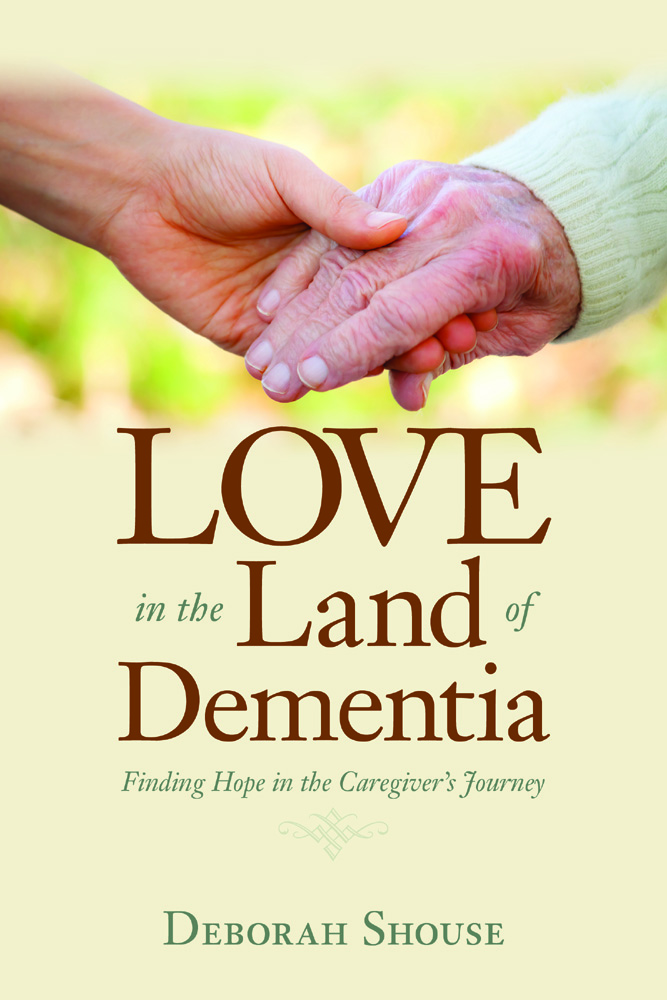
Deborah Shouse is the author of Love in the Land of Dementia: Finding Hope in the Caregiver’s Journey.
Dementia Arts to Draw us Together
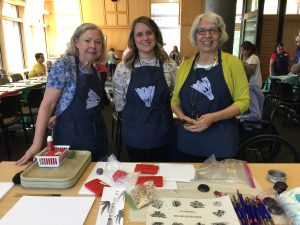 September’s Memory Cafe featured a lively team of educators from the Nelson-Atkins Museum of Art. Using the arts to draw us together, they showed us the Chinese art form of painting pictures of bamboo. About fifty of us gathered in the the library’s spacious lower level. Colorful plastic cloths covered our tables, making it easy to distinguish our drawing paper and painting supplies.
September’s Memory Cafe featured a lively team of educators from the Nelson-Atkins Museum of Art. Using the arts to draw us together, they showed us the Chinese art form of painting pictures of bamboo. About fifty of us gathered in the the library’s spacious lower level. Colorful plastic cloths covered our tables, making it easy to distinguish our drawing paper and painting supplies. 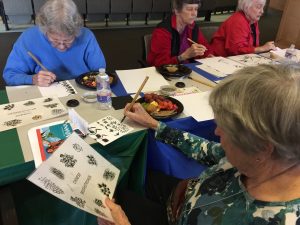 All of us eagerly dipped our special bamboo brushes into the ebony paint and made short pushing movements, replicating segments of the plant’s stalk. Then our educators showed us drawings of bamboo foliage and we experimented with wispy thin lines of leaves.
All of us eagerly dipped our special bamboo brushes into the ebony paint and made short pushing movements, replicating segments of the plant’s stalk. Then our educators showed us drawings of bamboo foliage and we experimented with wispy thin lines of leaves.
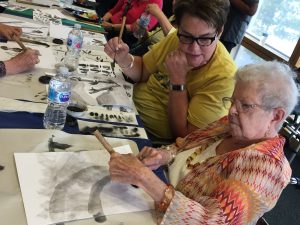 Our common ground continued as our teacher said, “Now, we’re going to pass out large sheets of paper.” We all oohed and aahed and let our strokes grow larger and more confident. At the end, each person created a design in a small wedge of clay, pressed the clay into a red stamp pad, and adorned the painting with our own personal “signature.”
Our common ground continued as our teacher said, “Now, we’re going to pass out large sheets of paper.” We all oohed and aahed and let our strokes grow larger and more confident. At the end, each person created a design in a small wedge of clay, pressed the clay into a red stamp pad, and adorned the painting with our own personal “signature.”• To add extra meaning, connect the artistic activity with something in your partner’s past.
• Invite an intergenerational mixture of artists, from children, grandchildren, art students, and volunteers to join your partner and add encouragement. 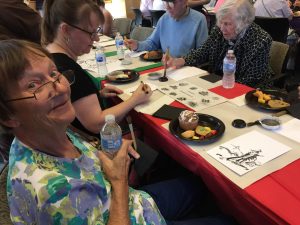
• Create a variety of art-related activities, including visiting galleries or looking at pictures from magazines, as well as painting, drawing or various media.


Movies and Memories: Traveling the World Without Leaving Kansas City:
“I’ve traveled the world. Our family moved a lot when we were young,” one of our guests told us, at our August Movies and Memories program. She and her husband bent over our world map and stuck stars on some of the many places 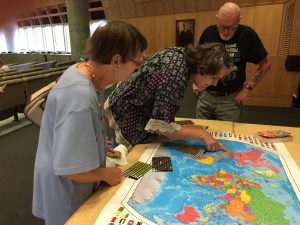 they’d lived. Another guest sighed when he looked at the map and saw Vietnam. He had served in the military there. A couple talked about living in Berlin when the Wall came down.
they’d lived. Another guest sighed when he looked at the map and saw Vietnam. He had served in the military there. A couple talked about living in Berlin when the Wall came down.
Our Movies and Memories travel films included forays into Paris, Iceland, Capetown, and Seoul.
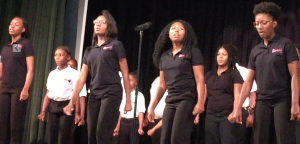 “It was relaxing just watching the scenes from Paris,” said Ah’Lee Robinson, director of the Kansas City Boys and Girls Choirs. He and his singers treated us to an inspiring concert, warming us up for the films.
“It was relaxing just watching the scenes from Paris,” said Ah’Lee Robinson, director of the Kansas City Boys and Girls Choirs. He and his singers treated us to an inspiring concert, warming us up for the films.
“Oh dear, now I want to go to Iceland,” another guest said.
In between clips, we passed around exotic spices for everyone to smell. At the end of the movies and memories adventure, everyone took home a special “Passport” booklet, created by the library’s Emily Cox, so they could record impressions and memories. To experience the event, click here.
Here are some passport questions to discuss at home: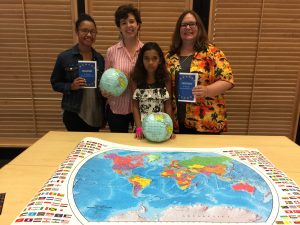
Share some travel memories.
What is one of the most beautiful places you’ve ever visited?
What’s the farthest you’ve ever traveled?
What country has the best food?
How many of the US states have you visited?
Thanks to our wonderful volunteers, Sharon and Julie, who brighten our events by bringing treats, making popcorn, and making everyone feel so at home.
Thanks to Craig Eichelman, State Director, AARP, for helping us spread the word about this program.
 We are so grateful for the continuing support from the Kansas City Public Library. They are amazing champions for people who are living with dementia and their care partners. They also provide scholarships for hard-working people whose higher education has been interrupted by life circumstances. Their community programs benefit early readers, job seekers, and people who are new to KC. Ron and I use their books and other services every week!
We are so grateful for the continuing support from the Kansas City Public Library. They are amazing champions for people who are living with dementia and their care partners. They also provide scholarships for hard-working people whose higher education has been interrupted by life circumstances. Their community programs benefit early readers, job seekers, and people who are new to KC. Ron and I use their books and other services every week!
Please join us for our next adventure — Moana. This movie is so inspiring and great for all ages.
